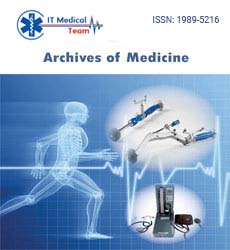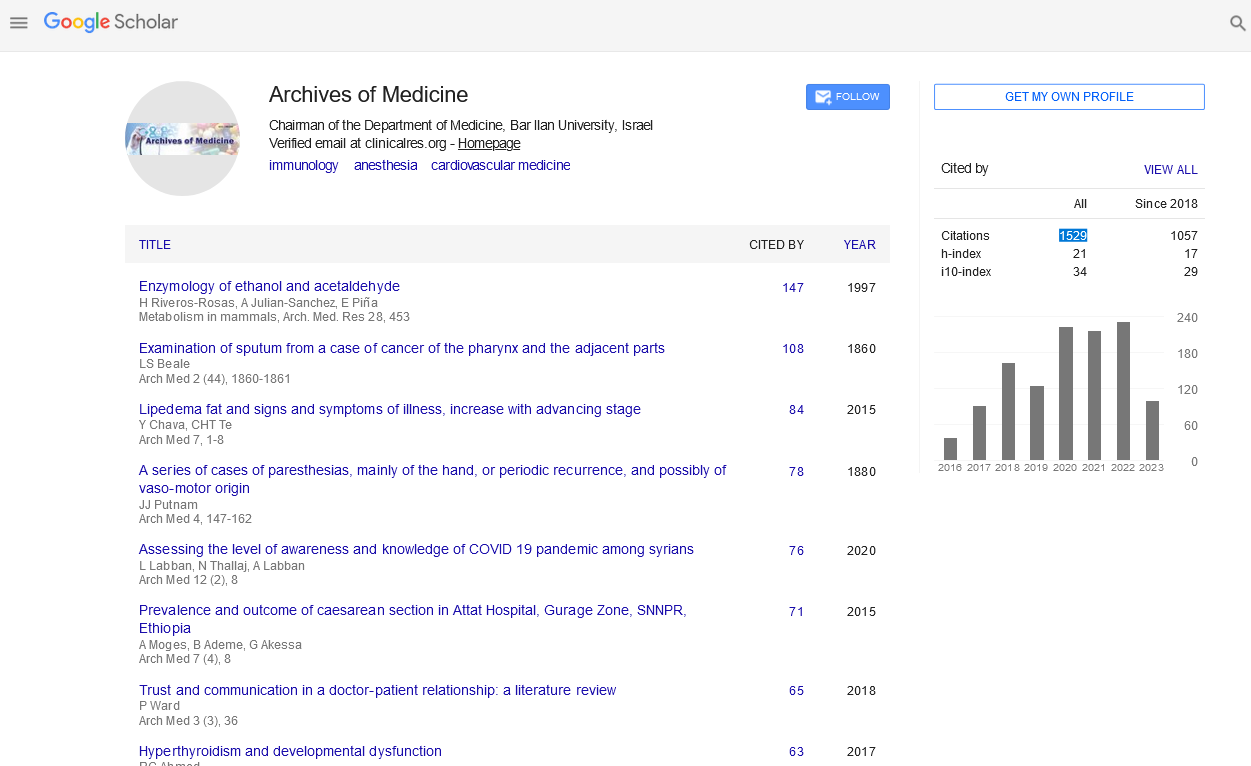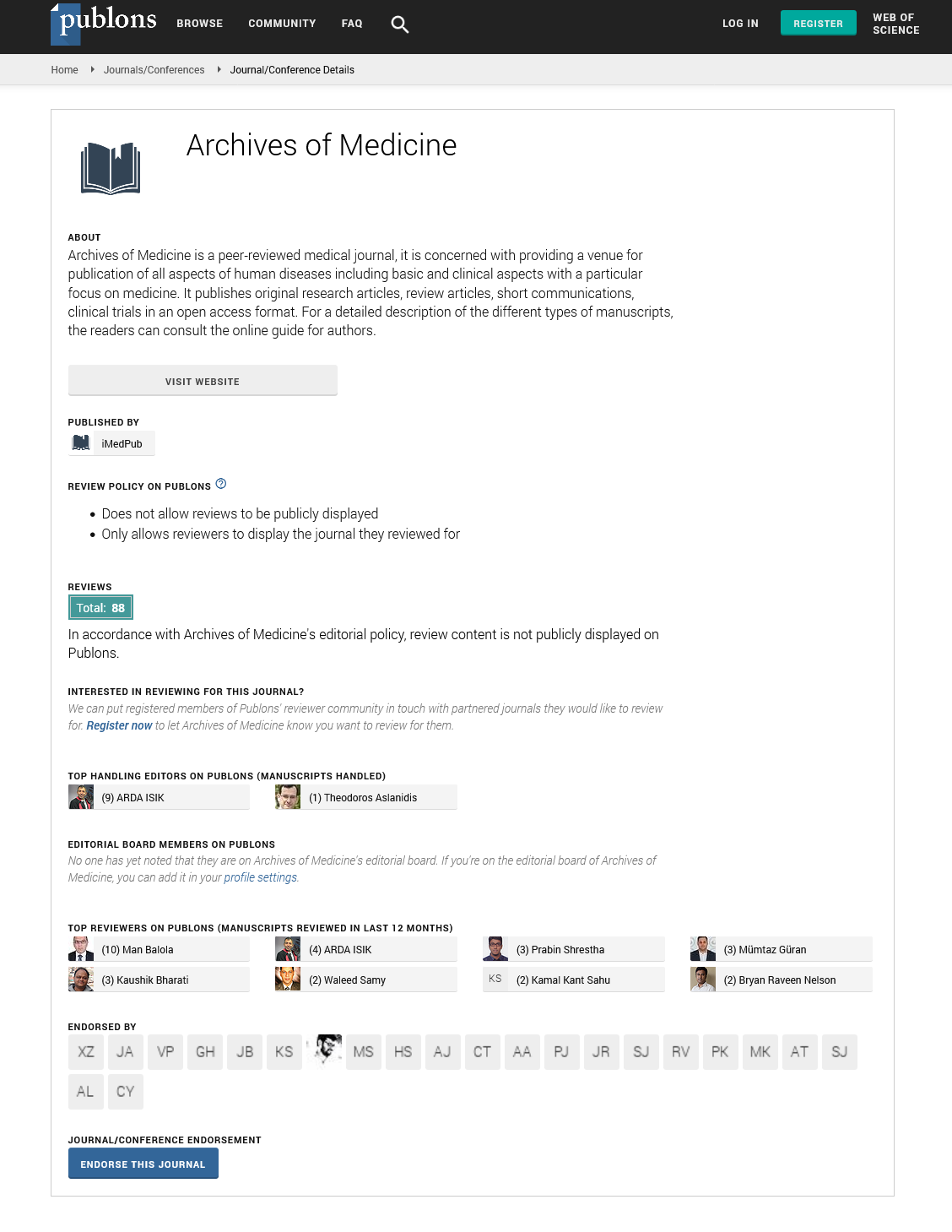Short Communication - (2024) Volume 16, Issue 3
From ancient remedies to modern miracles: A medical archive
Zhang Fei*
Department of Clinical Medicine, Fujian Medical University, Fuzhou, Taijiang, China
*Correspondence:
Zhang Fei, Department of Clinical Medicine, Fujian Medical University, Fuzhou, Taijiang,
China,
Email:
Received: 01-May-2024, Manuscript No. ipaom-24-14995;
Editor assigned: 03-May-2024, Pre QC No. P-14995;
Reviewed: 15-May-2024, QC No. Q-14995;
Revised: 22-May-2024, Manuscript No. R-14995;
Published:
29-May-2024
Introduction
Medicine, as a field of human endeavour, has traversed an extraordinary journey throughout the annals of history. From the mystical practices of ancient civilizations to the cutting-edge technologies of the modern era, the evolution of medical knowledge is a testament to the ingenuity and perseverance of humanity in its quest for understanding and healing. This narrative, spanning millennia, unveils the rich tapestry of medical archives, where the wisdom of the past converges with the innovations of the present to shape the future of healthcare [1].
The origins of medicine can be traced back to the dawn of civilization, where ancient cultures sought to unravel the mysteries of the human body and the forces that afflict it. In the cradle of civilization, Mesopotamia, healers known as "Asu" practiced a form of medicine that combined empirical observation with spiritual beliefs. Cuneiform tablets dating back to the third millennium BCE reveal the remedies prescribed by these early practitioners, ranging from herbal concoctions to incantations invoking the aid of deities [2].
Similarly, in ancient Egypt, the practice of medicine was deeply intertwined with religion and magic. The Ebers Papyrus, a medical scroll dating to around 1550 BCE, provides insights into the medical knowledge of the time, detailing treatments for a myriad of ailments, including prescriptions for herbal remedies and surgical procedures. The Egyptian civilization also made significant advances in embalming techniques, laying the groundwork for the study of anatomy and the understanding of human physiology.
Description
The classical civilizations of Greece and Rome further contributed to the development of medicine through the works of legendary figures such as Hippocrates and Galen. Hippocrates, often regarded as the father of Western medicine, emphasized the importance of observation and rational thinking in diagnosing and treating diseases. His renowned corpus, the Hippocratic Corpus, comprises a collection of medical texts that laid the foundation for clinical practice and medical ethics. Galen, a physician in the Roman Empire, built upon the teachings of Hippocrates and made significant strides in anatomical research and experimental physiology. His meticulous dissections of animals enabled him to formulate theories about the structure and function of the human body, many of which endured for centuries [3].
The medieval period witnessed a synthesis of knowledge from diverse cultural traditions, as scholars in the Islamic world translated and expanded upon ancient Greek and Roman texts. Scientific Figures made groundbreaking contributions to medicine, advancing the fields of pharmacology, anatomy, and physiology. The Renaissance marked a resurgence of interest in the study of anatomy and the human body, spurred by the pioneering work of figures like Leonardo da Vinci and Andreas Vesalius. Da Vinci's anatomical drawings, characterized by their precision and artistic beauty, remain as testament to his keen observations and scientific curiosity. Vesalius, through his seminal work "De Humani Corporis Fabrica," revolutionized the field of anatomy by challenging the anatomical misconceptions of his time and advocating for hands-on dissection as the cornerstone of medical education [4].
The dawn of the modern era witnessed unprecedented advancements in medical science, driven by technological innovation and rigorous scientific inquiry. The discovery of the microscope in the 17th century opened new vistas in the study of infectious diseases, as pioneers like Antonie van Leeuwenhoek revealed the microscopic world teeming with life. The 19th and 20th centuries witnessed a paradigm shift in medicine with the emergence of germ theory, vaccination, and the development of antibiotics and anesthesia. Figures such as Louis Pasteur, Robert Koch, and Alexander Fleming ushered in an era of scientific medicine, where diseases could be understood at the molecular level and targeted with precision. The 20th century also witnessed remarkable progress in surgical techniques, diagnostic imaging, and the advent of personalized medicine. Innovations such as X-rays, MRI, and CT scans revolutionized the diagnosis and treatment of diseases, enabling physicians to visualize internal structures with unprecedented clarity.
Moreover, the mapping of the human genome in the 21st century heralded a new era of genomic medicine, where the genetic basis of diseases could be elucidated, and tailored therapies could be developed based on an individual's unique genetic makeup. Breakthroughs in fields such as gene editing, stem cell therapy, and immunotherapy hold the promise of transforming the landscape of healthcare, offering new hope to patients with previously untreatable conditions. In parallel to these scientific advancements, traditional healing practices from around the world continue to endure, offering complementary approaches to healthcare that emphasize holistic well-being and the interconnectedness of mind, body, and spirit. Systems such as Traditional Chinese Medicine (TCM), Ayurveda, and Indigenous healing traditions preserve ancient wisdom passed down through generations, offering insights into the profound relationship between humans and the natural world. The convergence of ancient wisdom and modern science represents a fertile ground for exploration and innovation in medicine. Medical archives serve as repositories of this collective knowledge, preserving the wisdom of the past while inspiring the discoveries of the future. From the clay tablets of ancient Mesopotamia to the digital databases of the 21st century, these archives chronicle the evolution of medical thought and practice, illuminating the path from ancient remedies to modern miracles [5].
Conclusion
In conclusion, the journey of medicine is a testament to the resilience and creativity of the human spirit in the face of adversity. From the humble beginnings of ancient healers to the extraordinary achievements of modern medicine, the quest for healing has been a constant thread woven through the fabric of human history. As we stand on the threshold of a new era in healthcare, let us draw inspiration from the lessons of the past and embrace the challenges of the future with courage and curiosity. For in the intersection of ancient wisdom and modern science lies the promise of a healthier and more compassionate world for generations to come.
Acknowledgement
None.
Conflict of Interest
None.
References
- Fabricant DS, Farnsworth NR. The value of plants used in traditional medicine for drug discovery. Environ Health Perspect. 2001; 109(suppl 1):69-75.
Google Scholar, Crossref, Indexed at
- Zhang L, Yan J, Liu X, et al. Pharmacovigilance practice and risk control of traditional chinese medicine drugs in china: Current status and future perspective." J Ethnopharmacol. 2012; 140(3):519-525.
Google Scholar, Crossref, Indexed at
- Watanabe S, Imanishi J, Satoh M, et al. Unique place of Kampo (Japanese traditional medicine) in complementary and alternative medicine: A survey of doctors belonging to the regional medical association in Japan. Tohoku J Exp Med. 2001; 194(1):55-63.
Google Scholar, Crossref, Indexed at
- Mogami S, Hattori T. Beneficial effects of rikkunshito, a Japanese kampo medicine, on gastrointestinal dysfunction and anorexia in combination with western drug: A systematic review. Evid Based Complement Altern Med. 2014(1); 519035.
Google Scholar, Crossref, Indexed at
- Muschietti L, Vila R, Cechinel Filho V, et al. Tropical protozoan diseases: Natural product drug discovery and development. Evid Based Complement Altern Med: eCAM. 2013.
Google Scholar, Crossref, Indexed at






